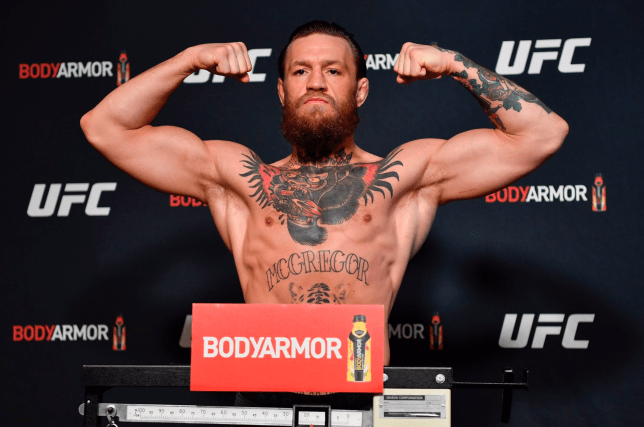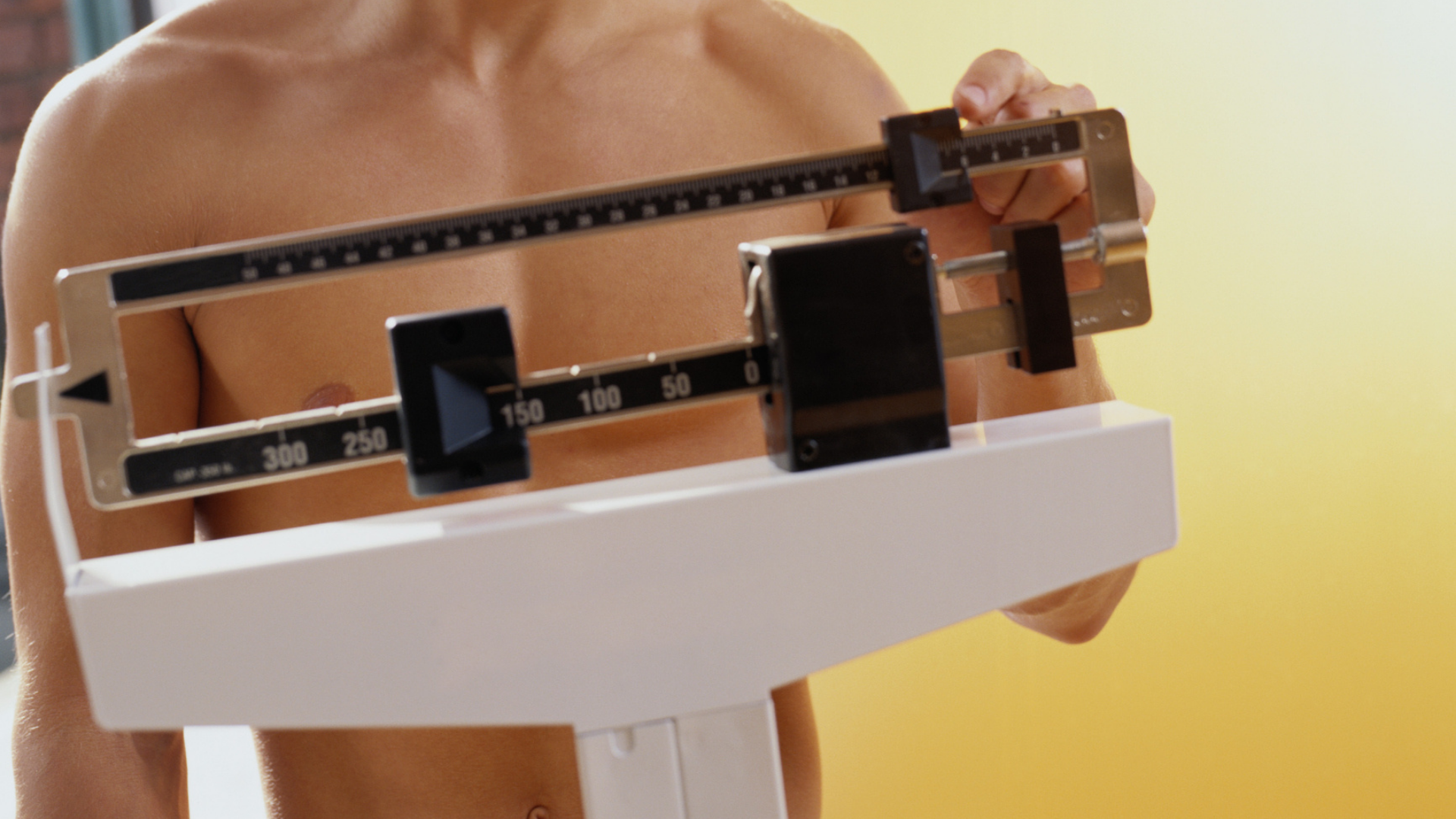When fighters are getting ready for a fight, they have to weigh-in to make sure they fall within their weight classes. Many fighters want to have an advantage by weighing-in at a weight below their natural weight, so they cut their weight before a fight. The weigh-in is usually the day before the fight, and the fighter can rehydrate and get the nourishment his body needs before the actual fight.
Fighters will often cut weight before the weigh-in so that they can fight in a lower class. This can give fighters an advantage and the ability to overpower their opponents. After the weigh-in, they will rehydrate and renourish their bodies to have the strength and stamina they need for the fight. They gain some weight in this process, and the amount varies from fighter to fighter.
This article will examine how much weight fighters can gain by the actual fight, why they cut weight, and whether it is safe. Please continue reading to learn all about it.
Fitness To Diet is supported by its audience. When you purchase through links on our site, we may earn an affiliate commission, at no additional cost to you. Learn more.

Table of Contents
What Are Weight Classes in Fighting?
Fights are divided into weight classes, and there is usually a name for the class. It varies among different sports, including MMA, UFC, Boxing, and more. If a fighter wants to fight in a particular weight class, he needs to weigh-in and be under that weight before the fight. They often take measures to cut their weight so that they can weigh-in successfully.
Weight classes are designed to make sure that neither party has the advantage of size when they fight. They should be evenly matched so that the more skillful fighter is victorious. Fighters know that more mass means more weight, so they try to enter the lowest weight class possible. Some fighters stay close to their natural weight by dropping a few pounds, while others might try to lose as much as 20 or 30 pounds before a fight.
How Do Weigh-ins Work in Fighting?
Most of the time, a weigh-in is scheduled the day before the fight. The fighters must be within a pound of the maximum weight. They usually have access to the scale before the weigh-in to know whether they will make the weight. Once they do the official weigh-in, they are free to go and rehydrate and eat before the fight. They are not normally weighed again.
Some people think the weigh-in should occur the day of the fight because fighters might not take such extreme measures to cut weight before a fight if they do not have time to rehydrate. Fighting while dehydrated will slow down the fighters’ reaction times and make them feel more tired and weak, and they are likely to avoid this.
Others believe that the system works the way it is, and they advocate for an unofficial weigh-in before the fight so that people know the weight difference between the two fighters. The current system allows fighters to weigh-in and gives them enough time to rehydrate to be in good condition on the day of the fight.
How Much Weight Do Fighters Cut Before a Fight?
The amount of weight that fighters cut varies widely, with some choosing to fight close to their natural weight and others choosing to lose 20 to 30 pounds, or even more. Each fighter has his program and knows what he can achieve before a fight.
Many fighters spend two weeks to a month preparing for the weigh-in by changing their diets, increasing water intake to sweat more, and dehydrating their bodies in the days before a weigh-in. The extent of these measures depends on how much weight the fighter is looking to cut.
The fighters who are in lower weight classes cut more weight than those in heavier weight classes. They can cut as much as 30 pounds or more before the weigh-in, and then they gain it back before the actual fight.
Do Fighters Return to Their Normal Weight Before the Fight?
Some fighters do return to their normal weights before the actual fight. It depends on the fighter and how much weight he has cut. If a fighter cuts two or three pounds, they can easily return to their normal weight by eating and rehydrating in the 36 hours between the weigh-in and the fight.
Some trainers say that fighters will gain back roughly 70% of the water weight they lose before the fight. When a fighter dehydrates, the body releases a hormone to help the muscles, joints, and other body parts function in this dry environment. When the fighter drinks water and rehydrates, it takes time to rehydrate fully. Most fighters have time to rehydrate 70% of the water weight they have lost.
Fighters try to rehydrate enough that their muscles are supple and they have the stamina they need to get through the fight. Most of the time, the fighter will return to his natural weight for the actual fight.
What Do Fighters Eat and Drink After a Weigh-in?
After a weigh-in, the fighter needs to rehydrate and provide his body with the nutrients it lost during the weight cut. Some fighters used an IV drip to rehydrate their bodies in the past, but that is no longer allowed. They usually have 24 to 36 hours to rehydrate between the weigh-in and the fight.
They drink water with electrolytes to rehydrate their bodies, and it is common for a fighter to drink between three and five gallons of water between the weigh-in and the actual fight. They do not drink the water all at once, but they continuously drink it during this period. The body reacts better to the consistent replenishment of water rather than a sudden influx.
They also need to nourish their bodies, and they usually have small meals every 30 minutes over this same period. They need carbs to get their blood sugar back up, calories for energy, and protein for muscle health. They stick with smaller portions because it is easier to digest, and they eat highly digestible and usable foods.
A fighter can gain enough weight to be heavier than his opponent. This gives him an advantage as they can use their weight to get the opponent off balance. The amount of weight that a fighter will gain and the amount of food he eats depend on the individual and what steps he has taken to weigh in.
- Liquid I.V. Hydration Multiplier – Helps you hydrate 2x faster than water alone with Hydration Multiplier, a great-tasting electrolyte drink powder with five essential vitamins and 3x the electrolytes of traditional sports drinks. Whether you’re in need of hydration for exercise, travel, or long nights, Liquid I.V. Hydration Multiplier packets have you covered.
- Great taste -Lemon Lime Hydration Multiplier is the flavor that started it all. This sunny mix of citrus flavors is equal parts zesty and refreshing. An instant fan favorite.
- Cellular Transport Technology – The science of Cellular Transport Technology (CTT), used in Liquid I.V. products, is based on an optimal ratio of ingredients designed to enhance rapid absorption of water and other key ingredients into your body. Thanks to this fast acting system, Hydration Multiplier helps provide faster, more efficient hydration.
What Happens If the Fighter Doesn’t Weigh-in?
You are likely already aware that fighters must make their weight class if they want to fight. If they don’t, there are consequences beyond being disqualified. The fighter is often fined a percentage of the overall purse, which is given to his opponent. If it happens often, the fighter may be barred from entering that weight class in the future.
If the fighter misses the weigh-in by a small amount, the consequences are less severe. Rarely, a fighter is way over because they know what they need to do to make the weigh-in. However, the fighter will almost always be fined for not making the weight.
Sometimes the fight is canceled, and the fighter who was over has to pay a fine. Other times, the fight will go on, but the fighter who was over is not eligible for a title. In this case, the fighter still has to pay a fine most of the time.
There are circumstances where a fighter is given a window of time to drop the weight and weigh in again, in which case the fight can continue. The bottom line is that fighters need to make the weight for their chosen weight class, and they do everything they can to achieve this goal.
What Weight Do Fighters Actually Fight?
The answer is that it depends. Fighters almost always try to gain back the weight they lost for the weigh-in. They want to weigh as much as they safely can without compromising their ability to compete. Weighing more gives a fighter an advantage because they will be more alert and have more force when punching or trying to get their opponents off balance. If a fighter loses 10 pounds, he will likely gain it back before the fight.
Final Thoughts
People often want to know how much weight fighters gain back before the fight. They wonder why they go to the trouble of losing weight if they are both heavier than their weight class. If the two fighters are evenly matched and lose the same amount of weight, this is fairly accurate.
As long as there is enough time between the weigh-in and the actual fight, fighters will lose weight and gain it back on some level to remain competitive. They use various methods to cut weight, and then they rehydrate and nourish their bodies so that they are ready for the fight.


